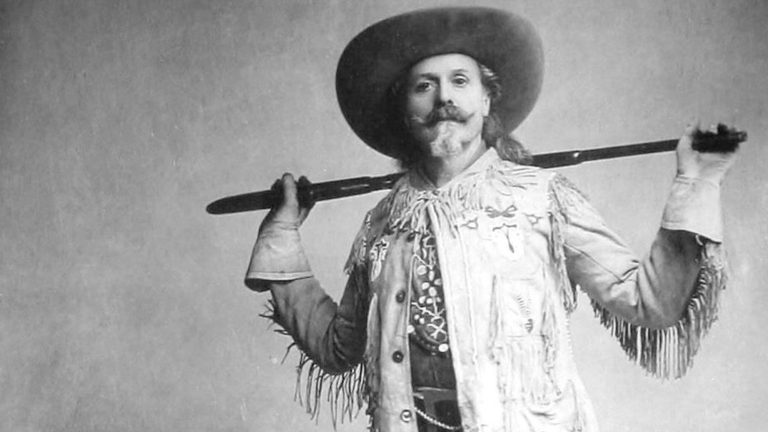Cody’s empire slowly crumbled during the last ten years of his life. He had overextended himself financially with bad investments, and keeping the show running and managing activities in Big Horn proved too much. His marriage to Louisa ended in 1905, and was entangled in a lengthy divorce lawsuit. In Buffalo Bill fashion, he suffered in private, and pushed on with new projects to pay his debts. Continuing to use the debt as leverage, Tammen forced Buffalo Bill to appear in Tammen’s Sells-Floto circus; this had been Tammen’s objective all along.
In 1913, The Colonel W.F. Cody Historical Pictures Company was formed to produce short films on the Indian wars, several of which survive to this day. Cody continued to try to preserve the West in new and entertaining ways out of respect to this rapidly disappearing era. Bill finally got out of his coerced agreement with Tammen in 1915. Bill never retired, even though he had hoped to do so. In 1916, Bill made his final appearance in the Miller Brothers and Arlington 101 Ranch Wild West Show. The timely theme of the show was one of military preparedness.
The final curtain lowered for Bill while he visiting his sister’s home in Denver on January 10, 1917. The following telegram served as a partial testament to William Frederick Cody:
Pine Ridge, South Dakota
January 12, 1917The Oglala Sioux Indians of Pine Ridge, South Dakota, in council assembled, resolve that expression of deepest sympathy be extended by their committee in behalf of all the Oglalas, to the wife, relatives, and friends of the late William F. Cody for the loss they have suffered; that these people who have endured may know that the Oglalas found in Buffalo Bill a warm and lasting friend; that our hearts are sad from the heavy burden of his passing, lightening only in the belief of our meeting before the presence of our Wakan Tanka in the great hunting ground.
Chief Jack Red Cloud
According to Louisa, it was his choice to be buried on Lookout Mountain overlooking Denver and the Plains. Despite the claims of the citizens of Cody, Wyoming, that he really wanted to be buried near Cody, close friends and the priest who administered last rites, affirmed that Lookout Mountain was indeed his choice. The state legislature passed a resolution to allow a civilian to lie in state in the Capitol rotunda. On Sunday, January 14, 1917, a bitter cold day, over 25,000 people stood in line nearly a mile long to pay their respects to a national hero.
After the spring thaw, on June 3, 1917, Buffalo Bill was interred on Lookout Mountain, a point west of Golden, Colorado, with a spectacular view of both the mountains and plains – places where he had spent the happiest times of his life. Louisa died in 1921, and was buried beside him.
In his day, Cody was cast as a national hero, a role model, and a living legend. Buffalo Bill represented the quintessential American through his embodiment of frontier values and all the raw independence, freedom, and self-sufficiency included in Wild West virtues. Buffalo Bill became the very symbol of the American spirit.
Later, Buffalo Bill was inducted as a member of the Cowboy Hall of Fame in Oklahoma City in 1958 and a member of the Nebraska Hall of Fame in 1967.
Cody received the United States Medal of Honor in 1872 for gallantry as an army scout, but a congressional ruling in 1917 stated that only enlisted men and officers could receive the medal and that army scouts, who were considered civilians, were ineligible. revoking his medal shortly after his death. An army ruling in 1989 returned Cody’s name to the Medal of Honor list.
One thing is for certain when looking at the life of William Frederick Cody—the line between fantasy and reality, right and wrong, as well as realist versus illusionist, is very, very blurry. It was, and is, nearly impossible to tell where William Cody ended and Buffalo Bill began. That will be a matter for the individual reader to decide.

